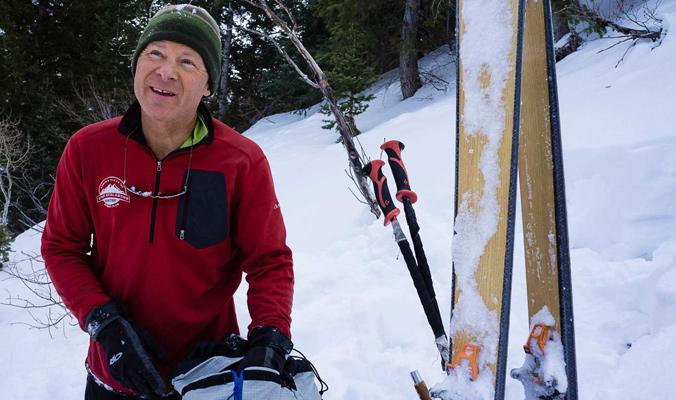Is it safer to be a backcountry skier now than it was 20 years ago? It’s a complicated question, but most snow-safety gurus believe the answer is yes. We spoke with eight leaders in avalanche mitigation and rescue about the progress made—and challenges that remain—since Backcountry premiered.
Bruce Tremper, 61, has been director of the Utah Avalanche Center since 1986 and is the author of the seminal book “Staying Alive in Avalanche Terrain.” Here’s an excerpt from our conversation on 20 years of education, safety and snow science.

Bruce Tremper, now trending on Twitter and Instagram. [Photo] Matt Hart
For a long time we invited them to send us e-mails or submit their observations. But social media is so important these days. Twitter and Instagram seem like they were tailor-made for avalanche forecasting. People can use #utavy, and if they put that in the caption then we will see that on our TweetDeck monitor in our office.
It’s amazing what backcountry users will do for free. They send in all kinds of photos and videos and snow profiles—it’s kind of set up an informal competition. People want to get bragging rights that their observations are on the avalanche site and that we’re referring to them when we’re posting their photos on the advisory.
The web is also tied to education. I do most of my learning online. And I think in the future people are going to take their introductory avalanche tutorials online in small, bite-size pieces when they’ve got an extra 10 minutes in their busy schedules. Then, after they’ve done that, they might take a full day with someone who can show them how to do things in the field. That’s the trend.
—
This story was first published in the November 2014 issue. Find the other conversations in this series here.











Related posts:
Mountain Skills: How To Become A Better Ski Partner
Mountain Skills: Travel Wisely
Mountain Skills: Anticipating Point Release Avalanches
The Art of the Up: Tips for Skinning Ease and Efficiency